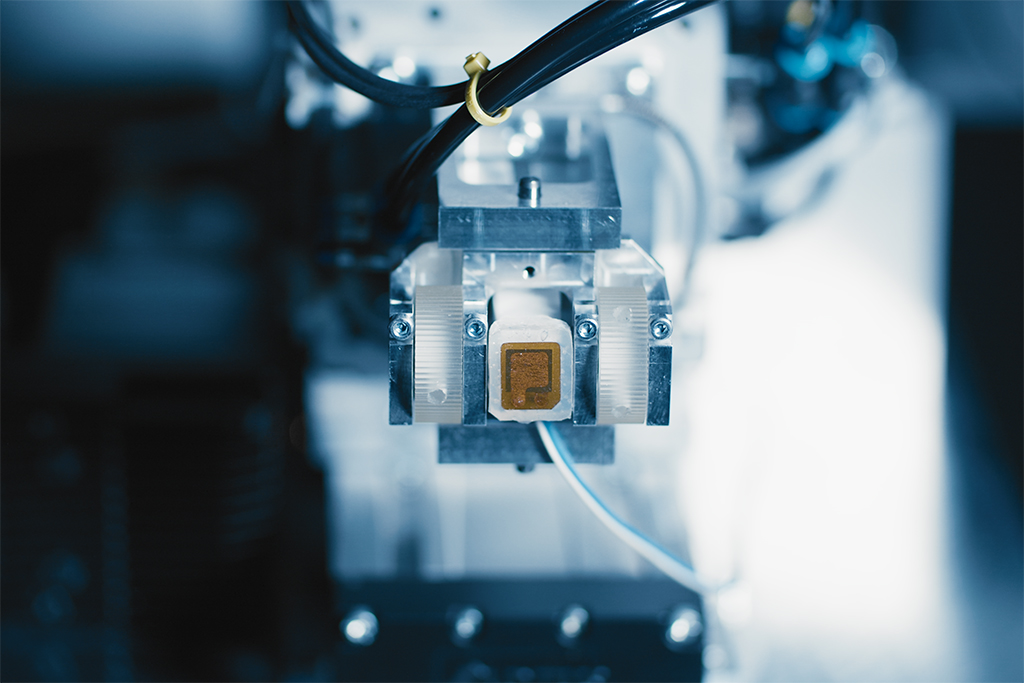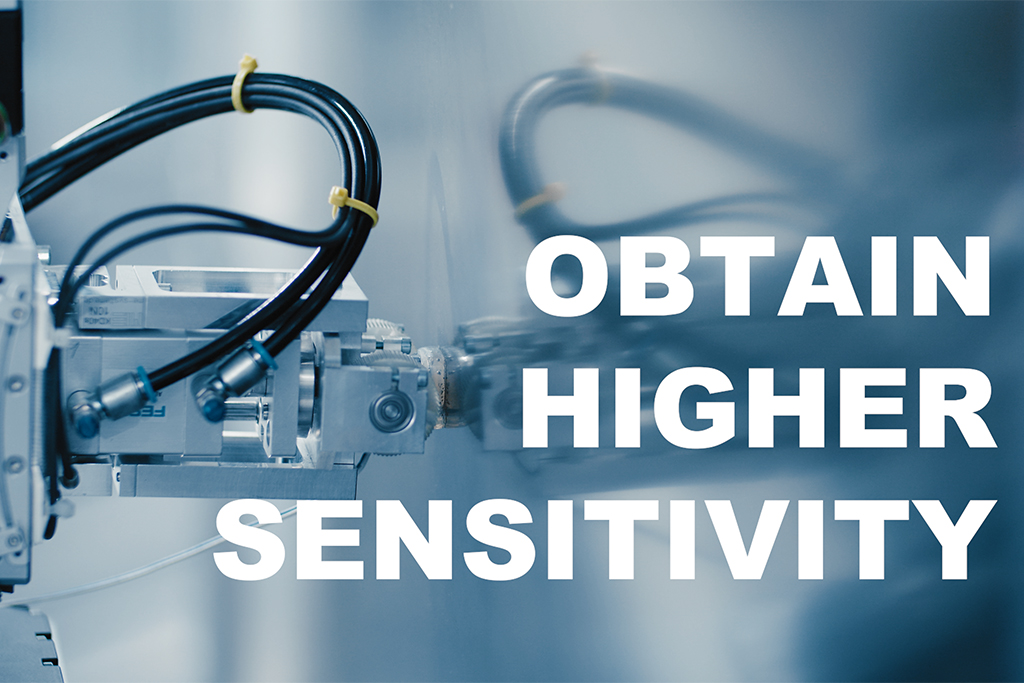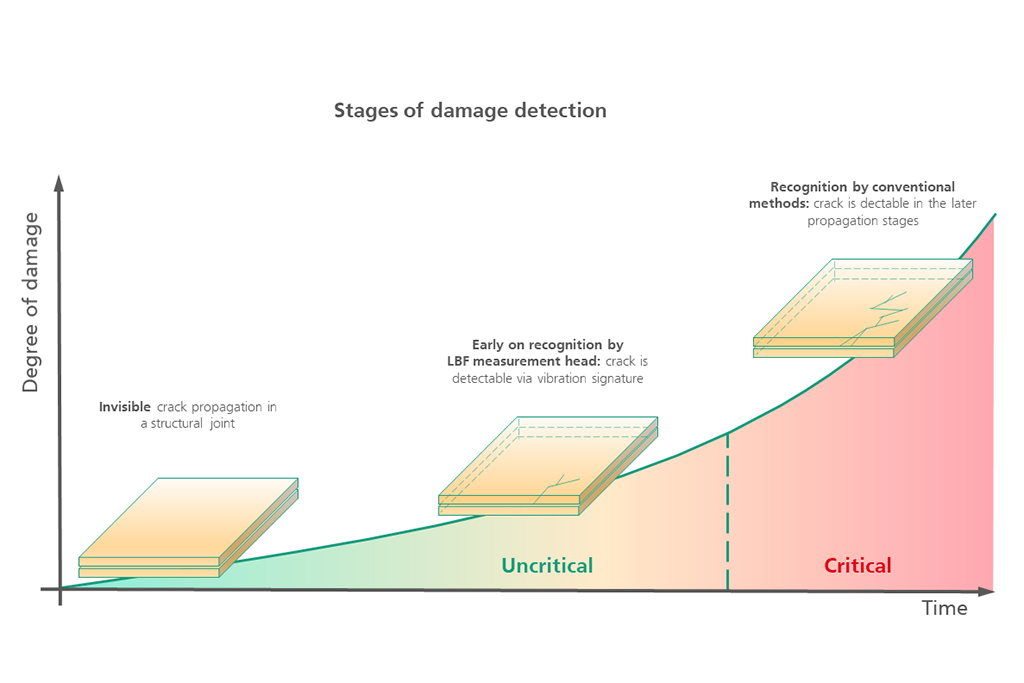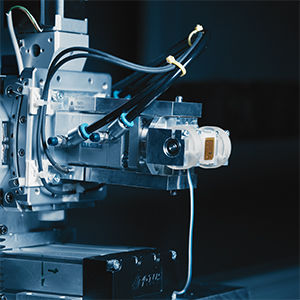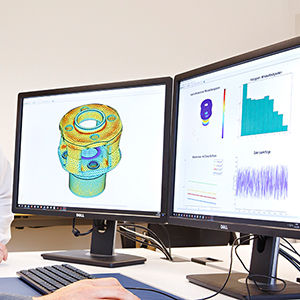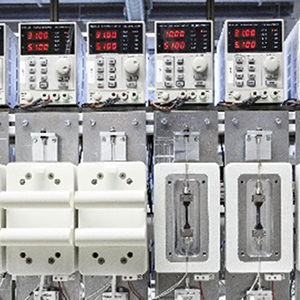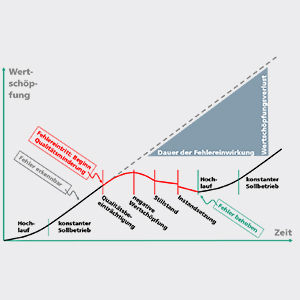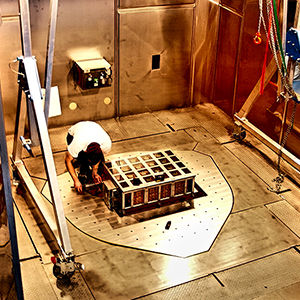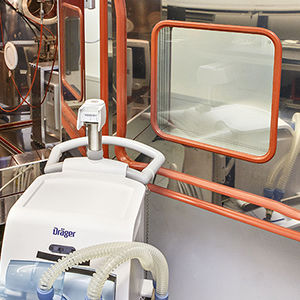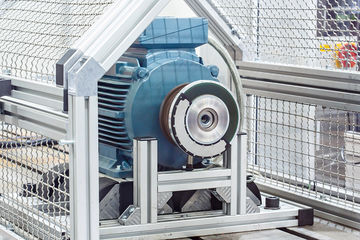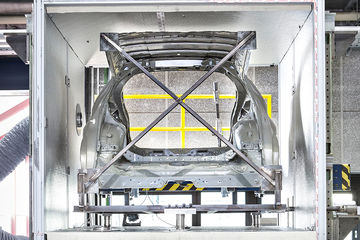Vibration-based structural monitoring using an adaptive EMI measuring head.
ELECTRO-MECHANICAL IMPEDANCE, QUALITY INSPECTION, PIEZO ELECTRICAL CONVERTERS, INLINE-MONITORING
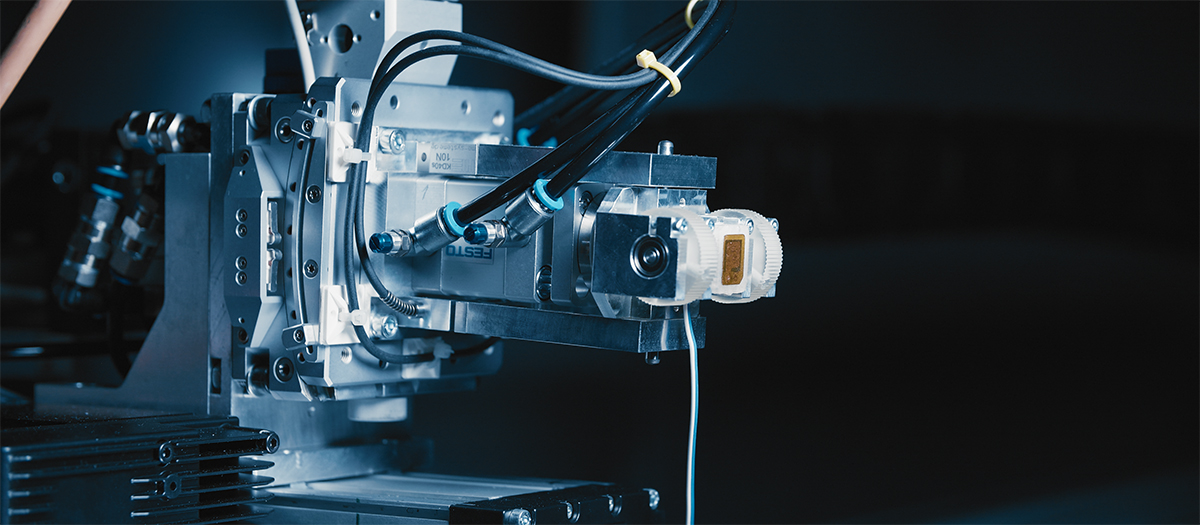
Manufacturers of structural components in all industrial sectors are faced with the challenge of ensuring the desired quality as well as the structural durability of their products across their lifetime. One promising procedure in non-destructive testing is based on the measurement of the electromechanical impedance. Fraunhofer LBF has developed an innovative method that enables the vibration-based and non-destructive testing of a structure’s condition based on electromagnetic impedance using an adaptive measuring head.
The conventional procedure to determine the electromagnetic impedance of a structure involves attaching a piezo electrical converter to its structure in order to establish electromagnetic coupling. The disadvantage of this procedure is that the converter can only be removed after the measurement with significant effort and this carries the risk of damaging the structure. Up to now, this has led to a restricted applicability of this procedure, since the measuring point could not be changed in a flexible manner and the sensor system had to remain in the part over the long term. As a result, the transfer of the technology to industry has so far been limited to stationary applications.
Innovative highly sensitive measuring system
Fraunhofer researchers have developed a measuring system which overcomes the aforementioned limitations and enables the automated inspection of structural components. A focal point in this work was the integration of the measuring system into a real-life industry production environment. They managed to take into account all relevant hardware and software interfaces of the production facility and showed the functional capacity of the realized system in this facility.
The unique feature of the measuring head developed at Fraunhofer LBF is that it is only pressed up against the test structure without the use of any additional coupling medium and can thus be removed afterwards without causing it any damage. The measuring head is able to simulate the test structure and measure the electromagnetic impedance at the same time. At less than 500 mW, the measuring head has a lower demand for electrical power than conventional non-destructive measurement procedures whose energy consumption is greater. The measuring head is superior to customary procedures as it is adjustable and highly sensitive and by identifying structural changes it can generate added value for customers from inspection and measuring technology through end users in the automotive and aviation industry.
Non-destructive, fast, automated:
This is how the identification of structural change using the new EMI measuring head of the Fraunhofer LBF can be described in a nutshell. When it comes to either inline or offline detection, the high sensitivity of the procedure, reference-based measurements, short measuring times and flexible adjustment to various positioning units enable faster and more reliable conclusions to be drawn about quality deviations or local structural changes (damage) than for example acoustic or optical systems.
EU, Clean Sky 2 (Grant Agreement CS2-LPA-GAM-2018-2019-01)
Patent
Registered with the German Patent Office, the disclosure has not yet been carried out.
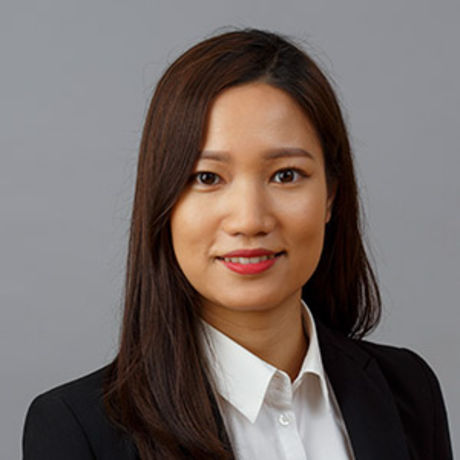
“The measuring head is superior to conventional procedures as it is adjustable and highly sensitive, and by identifying structural changes it can generate considerable added value for customers from inspection and measuring technology through to end users in the automotive and aviation industry.” Explains scientist Ye Ji Park, who is managing the project at Fraunhofer LBF.
Contact
- M.Sc. Ye Ji Park
- Phone: +49 6151 705-653
- ye.ji.park@lbf.fraunhofer.de
- Dipl.-Ing. M. Eng. Conchin Contell Asins
- Phone: +49 6151 705-8462
- conchin.contell.asins@lbf.fraunhofer.de
